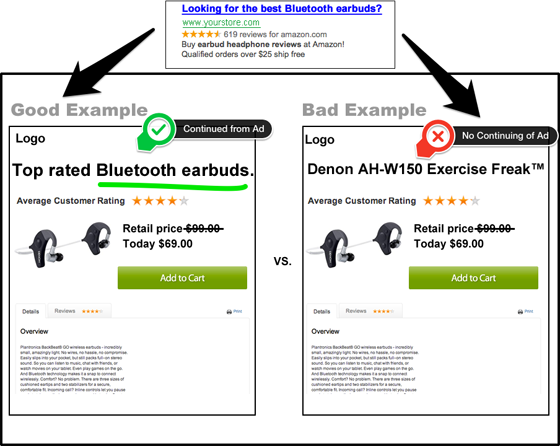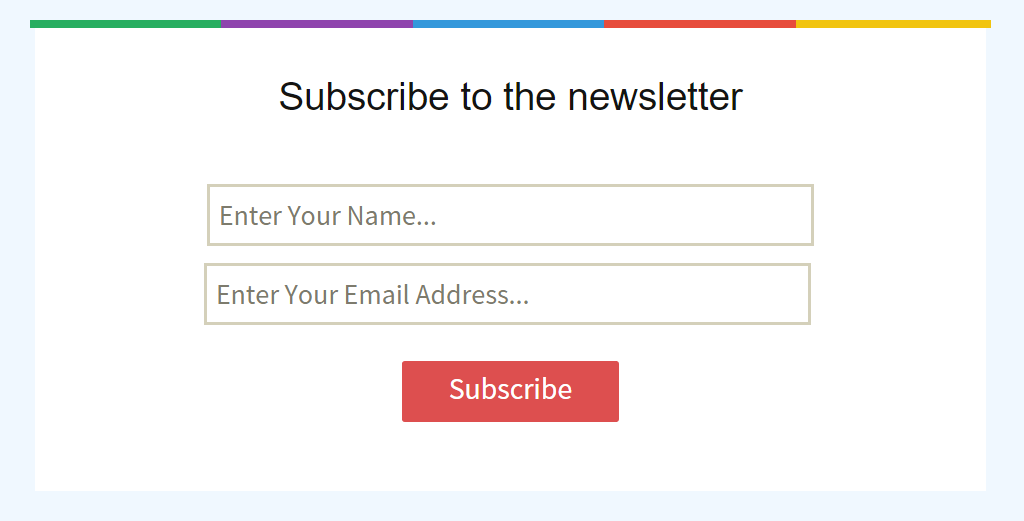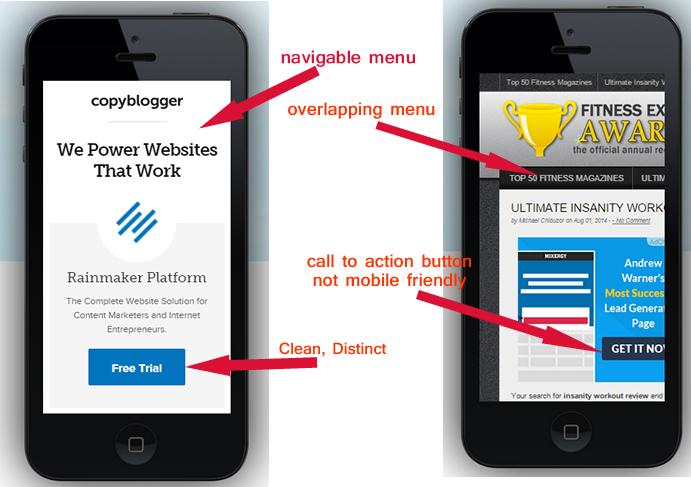Many business owners think that the most important page on their site is the homepage. However, that is not always the case. Most of the time your homepage is the less frequently visited page. That happens because of two reasons:
1. You have a lot of inner pages ranking on Google for long-tail keywords
2. You run paid ads to drive traffic to specific landing pages.
Either way, ranked pages or landing pages will be the most popular ones compared to your homepage.
A landing page is a standalone page designed for one specific objective. To attract interest to an offer. You should consider such a page as your online storefront. This means that the first impression is so important that it will determine whether the visitor will leave or stay and convert into a lead.
In reality, most landing pages are not optimized for conversions. They’re “pretty,” but they don’t work that well… That’s why we built Scriptly’s Page Builder. Conversion rate optimization (CRO) should be your top concern, after you’ve finished building a page.

Now, if you’re not satisfied with the number of leads you are converting you might be victim of one or more of the following “CRO crimes.” Here are the top 7 reasons why your landing page does not convert well.
Let’s take a look at them.
1) Content clutter
Business owners are usually so excited about their business or product that want to include everything on one page. Well, that’s a major mistake.
You need to keep your focus on your visitor, their needs, and their situation.
Avoid using too much text because not only does it require a lot of time to read but it also distracts the visitor from the action you want them to take.
For optimal results, you’ll want to remove irrelevant elements, like navigation and additional offers. For each element on your page, think: does this add to the result I want to achieve?” If not, remove that element without second thoughts. Keep your visitor’s focus on the offer at hand.
Your landing page should have one simple purpose: Get someone excited enough about your offer so that they’re willing to hand over their information.
If you’re wondering what exactly you should include on a page and what’s the best layout to place elements, Scriptly’s page builder will make building landing pages a piece of cake. With its pre-built templates and drag-and-drop functionality, you can create landing pages layouts in two seconds flat.
2) There’s no congruence between the ad and the landing page
When visitors read the ad copy and click, they immediately establish some expectations of what they would like to see on the page that follows the click. If your landing page headline is NOT a continuation of the ad, the user experience is disrupted and the visitor is more likely to abandon the page.
The more consistent an ad is with your headline the less likely you are to shoot yourself in the foot! The only way you can gain your customers’ attention is to be relevant. See the landing page as the continuation of the visitors’ journey to becoming a business lead.
Let’s see an example:

The ad intends to attract people looking for bluetooth earbuds. If you look at the two landing page screenshots, only the first one is optimized to match the customers’ expectations, thus have the potential to convert well. The second one has a product title that will most probably be confusing to the potential buyer.
Take the next step an learn how to turn cold traffic into leads and buyers with the Proven Lead Generation Template which an editable Photoshop Ad Template. It’s free to download here. A special bonus is also included. When you get access, you’ll also receive a video presentation walking you through the entire system!
3) Headline
The headline is the most important part of your landing page. It is the first piece of text that will attract your visitors’ attention. If you must do one thing right, that is your headline.
Psychologists have known all along that first impressions count. Headlines and a good sales message are no exceptions.
“On the average, five times as many people read the headline as read the body copy. When you have written your headline, you have spent eighty cents out of your dollar.” ~ David Ogilvy
Put simply, a headline is the most important part of a sales message. It’s so important that newspaper outlets often have a different person, other than the writer, construct the headlines.
A frequently used headline formula that is proven to be effective in converting cold traffic to lead is like this:
The Only [Product or Freebie Name] Made Exclusively to [Highly Desirable Outcome or Benefit] [Short Time Frame]
E.g. The Only SEO Guide Made Exclusively To Increase Your Sales In 30 Days Or Less
Try it out on your pages to see the results it can bring to your business.
4) Unclear offer and benefit
Here’s what you need to keep in mind: A landing page that doesn’t clearly communicate its purpose is a poor-performing landing page.
All of the following are crucial to conversions: Visual elements, like images or videos, headline, body copy and the order in which you place the elements—each of these must support one another to tell a persuasive story about your offer.
Within less than four seconds, a first-time visitor should be able to understand what this page is about and why they would care.
Converting cold traffic to leads or prospects requires a clear message on your page that will entice the reader to opt in. You should always speak the language of the customers to address their most important issues and how your offer will change their current experience.
Of course, we can assume that different page copy works for different goals. However, there are some fundamental guidelines that you must follow on your landing pages:
Be specific – Focus on communicating your message
Be clear – Write exactly what you mean
Be brief – Remove unneeded words
Focus on the one thing that your prospects desire (that you provide)
Match the expectations of the visitors
5) You get too greedy on your landing page forms

Lead capture forms are the page element that is most likely to create the most friction on your landers. This is simply because no one is thrilled about giving up their contact information on the internet, particularly if it’s to somebody they don’t know yet.
Now, you can be your own worst enemy if you also put up a long optin form. A lot of business owners commit the mistake to ask all the information they want in one single form, which of course won’t work.
Your optin form length should be proportional to the value of the offer that you’re presenting to your visitors. So, if you’re giving away a short pdf report, asking just an email address or a first name and email address would do.
After you capture the lead, you can use additional tactics, like email marketing, to get the person’s full name, telephone number, country, gender or whatever makes sense to your business strategy.
In conclusion, it’s when you get too greedy that you misjudge, so don’t go asking people too much while you are offering too little.
6) Many calls to actions
One landing page should serve one purpose. Period.
That means one goal for you, and one goal for the people that land on your page. Most frequently your goal will be to convert them into leads (get their email), and their goal will be to solve their problem (grab your offer).
Between your goal and theirs, there is a lead magnet, i.e. some kind of a freebie. The only call to action (CTA) you need is the one that will make people give their email to download the freebie.
When designing a landing page you want to avoid giving people a lot of options. If your goal is to get their email address by giving them a free report as an ethical bribe, then you must just ask for their email.
Ask visitors to do a lot of things, and what happens instead is that users leave doing nothing.
7) CTA is in the wrong place
Another frequent problem that lowers conversion rates is the CTA button placement.
Your CTA, e.g. the button that writes “Download the ebook”, shouldn’t be hidden somewhere at the bottom of the page. It should be placed right there where the users can see it.
You might have heard marketers say “Place the CTA above the fold.” “Above the fold” is a way to describe the part of the page that you see without having to scroll down. While most people do scroll below the fold, it makes sense that the first thing they see will catch their attention.
Additionally, your CTA button should be just below the optin form–or right next to it if it’s a horizontal form.
You might be wondering how will that work on a mobile device where the screen size is much smaller. In that case, you should also try to place the headline, form, and CTA within the visible area of the screen.
Here’s a good example that Neil Patel presented on his blog:

And another example from Jeff Bullas’s site:

In both cases, all the important elements of the landing page are in the visible part of the screen.
Top reasons why your landing page does not convert
So, those were the top ways you can undermine your landing page conversion rates. Increasing conversions is both an art and a science—and you are in control of both. Colors, typefaces, layout, copy all of them play a role. The science part comes when you acquire the right mindset and put systems in place to run tests.
You can, of course, jump into Scriptly’s Page Builder for free and start working with pages that you already know convert!
Even if you follow the best practices and take care of all of the CRO issues that were addressed in this article, it is when you actually run a campaign that you will see whether your landing page converts as expected. No matter what the results are, using variations of the page will help you test out each element and optimize for even higher conversion rates.
